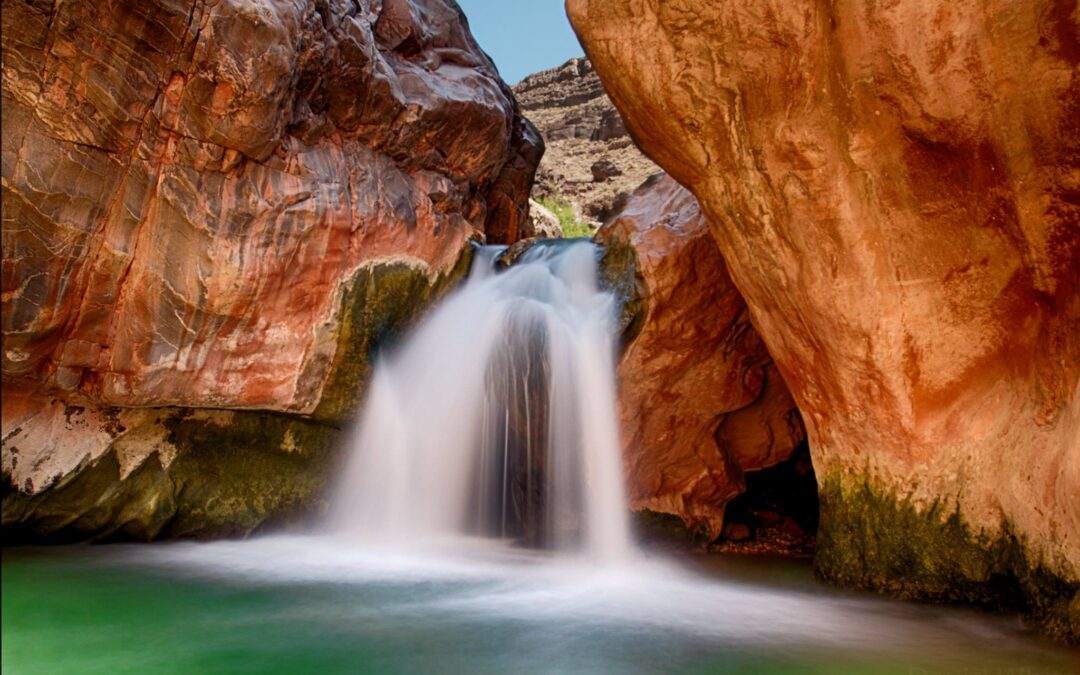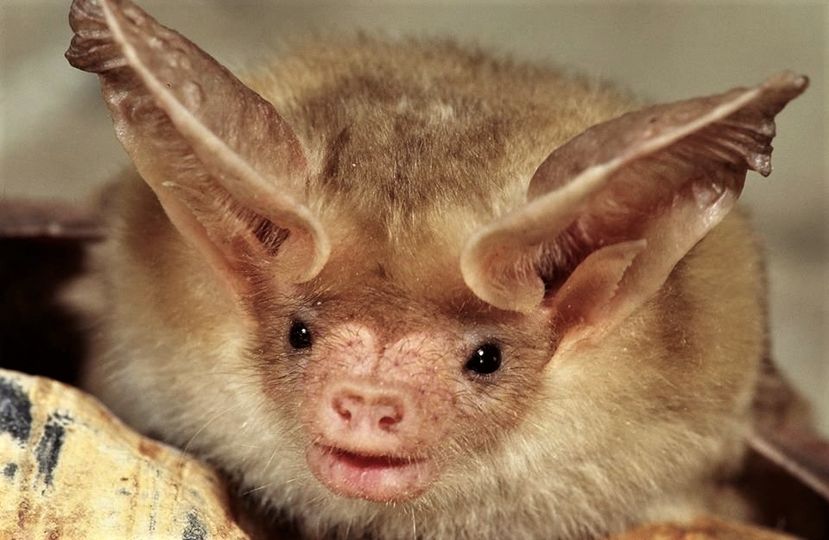Many of the stops on our Grand Canyon river trips revolve around one key element—water, and one them stands out as a consistent favorite: Shinumo Creek.


On top of Halloween coming next week, International Bat Week is from October 24-31, so we’re here to help you brush up on your knowledge of these incredibly cute, and arguably spooky, little creatures. Bats likely get their Halloween-related reputation as scary blood suckers from their nocturnal, cave-dwelling ways. Early on in vampire literature, authors and artists drew a connection between bats and the blood-sucking monsters. The most famous of these, of course, was Bram Stoker’s Dracula – a vampire who could transform into a bat. 
Contrary to their horror-style counter parts, bats are mostly harmless to humans. However, they’re essential to their ecosystems as pollinators (just like bees) and as insect predators. When you’re sleeping under the stars on your rafting trip, you can thank bats for decreasing the number of insects “bugging” you.
According to the National Park Service, there are 22 species of bats in the Grand Canyon itself. Turns out, the canyon walls are filled with countless caverns, there’s no shortage of places for them to roost.
Species that call Grand Canyon home include the smallest bat in the United States, the western pipistrelle (Parastrellus hesperus), which weighs only about 2.5g—about the same as a penny—and the largest in North America, the greater bonneted bat (Eumops perotis), whose wings span almost two feet. Another notable species is Townsend’s big-eared bat (Plecotus townsendii). The Townsend’s big-eared bat used to have a large roost in Stanton’s Cave, but has since been disturbed by human impact.
The Grand Canyon Wildlife Program tracks bat populations within Grand Canyon to better understand each species. They work to protect the Canyon’s bats from threats like white-nose syndrome – a fungal infection that has killed millions of bats in eastern North America.
Recently, some of the oldest and most perfectly preserved bat remains were found in a cave in Grand Canyon. Samples collected were found to be older than the limit of radiocarbon dating, which can date things back around 50,000 years old. From these samples, scientists are able to study bat communities from the past, understand long-term patterns of habitat use, and prepare for climate change.(1)

Perfectly preserved bats up to 50,000 years old (or more!) can be found on the gypsum-covered walls of the longest cave found so far in Grand Canyon. This cave is only accessible to researchers by carefully rappelling down from the rim, and the lack of easy accessibility means it appears to have never been disturbed by humans until it was discovered in 2008. Photo: Stephen Eginoire
In the article linked above, Vince Santucci, senior paleontologist with the U.S. National Park Service, states, “There is no other source of DNA known today, on planet Earth, of a large enough sample size that will enable us to look at those micro-genomic changes of a species over 50,000 years. This is revolutionary.”
Bats are the only mammals with true flight capabilities.
One bat can eat up to 5,000 insects a night!
There are nearly 1,000 species of bat worldwide.
Some bats emit sound that bounces off objects and helps them determine the size of an object, its distance from them, its speed, and even its texture—a process called echolocation.
Bats are the slowest reproducing mammals for their size, producing only one offspring per litter. (Though some species have up to three litters in one breeding season).
A bat can live up to 35 years.
It can be a little spooky to look up in the middle of your first night camping under stars in Grand Canyon and see bats whizzing all about. But don’t fear! They are essential to the ecosystem and help keep your trip fairly free of bugs. If you get a little too close to a bat on your river trip and actually come into contact with one, be sure to tell your guides right away.
Book a trip today to witness these beautiful creatures in their natural habitat!
Many of the stops on our Grand Canyon river trips revolve around one key element—water, and one them stands out as a consistent favorite: Shinumo Creek.
The Grand Canyon is one of the most beautiful places on earth and the Kolb brothers made it their life’s work to capture it….
The Grand Canyon is more than just a pretty place! It has so much to offer, so here are just a few facts about this incredible place…